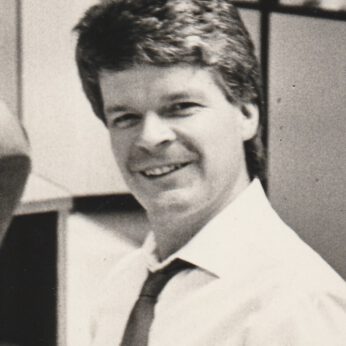Ms. Samantha Martin, Founder of KELY Support Group
30 years ago, I watched as people around me died from addiction, and I responded in the best way I knew how. On any given night, I would be in a park where drug addicts were known to hang out, sent out by concerned parents to find their missing kids and help them detox. And once a week, I hosted an informal meeting in my living room for more than a dozen strangers, a mishmash of young people from all walks of life in Hong Kong, who shared one thing in common: a struggle with addiction.
The issue of addiction is personal for me. Growing up, I had watched my father struggle with heroin addiction. Even though it wasn't obvious from the outside, I saw the impact on him and our family, but we didn't know how to help him. Later, when I was a teenager, I started drinking to self-medicate. I found it to be very numbing and it made me forget about things going on in my own world.
When my drinking spiraled out of control, my family sent me to a rehabilitation center in the U.S. I was the only teenager there - everyone else was much older than I was, so it was hard to relate. I was only meant to be there for four weeks, but ended up staying an additional three weeks, because my story was less extreme than the adults in the programme, and they didn't think I was being honest about my experience.
After I went back to Hong Kong, I came across an article in the South China Morning Post about heroin overdoses amongst expat youth. It was great that he was highlighting this major problem, but there was a disconnect, because I knew from my own experience that there wasn't any support specifically for young people and that drug use was such a taboo subject that kids were scared to ask for help. I contacted the reporter, Barry Grindod, to share my own story.
In February 1991, my story was published in the SCMP under the pseudonym "Kelly". The response was overwhelming. Barry and I received calls from young people who had nowhere else to turn, from family members who were burdened with the shame of a loved one's struggle with addiction, and from parents desperate to help their children.
I was barely 20 years old when I organised weekly "Kelly support group" meetings. It was a safe space - those who came didn't feel judged or preached to. I started it as something to save kids that I saw were drowning. For a lot of them, it was a lifeline. Soon, I was also getting requests from schools inviting me to speak to their students. It wasn't a drug class, it was an authentic sharing from someone who had been through it, so the students felt safe.
As more and more people contacted us for help over the first few months, we knew that we would have to formalise our group. We became officially incorporated as a nonprofit organisation, KELY Support Group (an acronym for Kids Everywhere Like You). Since then, KELY has grown and evolved to meet the needs for each new generation, but the heart of it is still the same. Looking back, the story of KELY is so simple to me. The story of KELY is about a girl named Kelly who cared a lot about the city that she lived in and the people who were dying from addiction.

